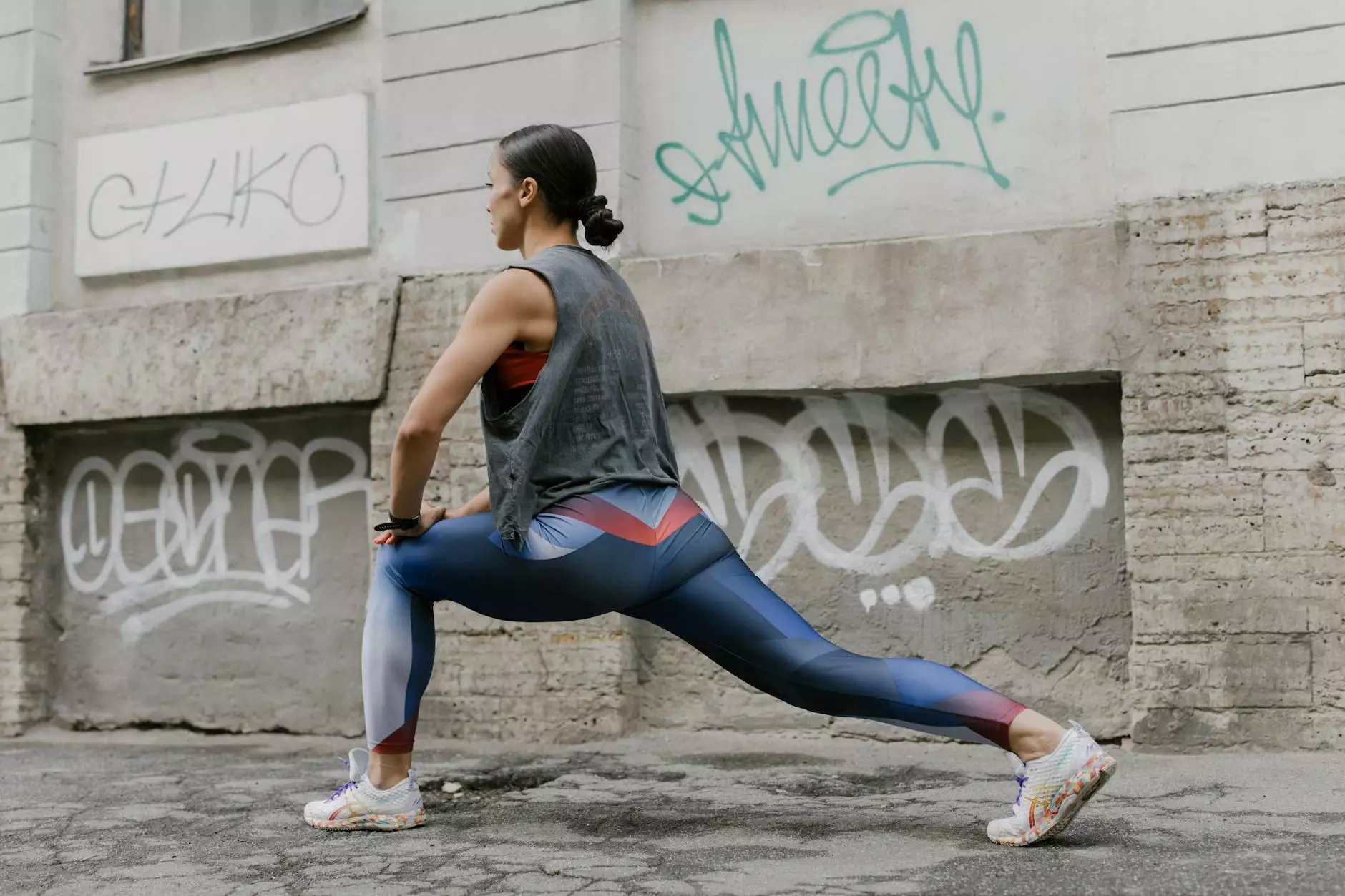Understanding Pain with Shoulder External Rotation: Causes, Diagnosis, and Effective Treatments

The shoulder joint is one of the most complex and versatile joints in the human body, allowing a wide range of motion essential for daily activities, sports, and occupational tasks. Among its movements, external rotation of the shoulder plays a critical role in various upper limb functions. However, experiencing pain during shoulder external rotation can significantly impair mobility and quality of life. This comprehensive guide aims to provide detailed insights into the causes, diagnostic procedures, effective treatments, and preventive strategies for pain with shoulder external rotation, equipping patients and practitioners with vital knowledge to manage this condition effectively.
Understanding Shoulder External Rotation: Anatomy and Function
The shoulder's ability to rotate externally is primarily facilitated by several key muscles and ligament structures. These include:
- Infraspinatus muscle: The primary muscle responsible for external rotation.
- Teres minor: Assists in external rotation and stabilization of the shoulder.
- Posterior shoulder capsule: Provides stability and allows range for external rotation.
- Glenohumeral joint: The ball-and-socket joint enabling multi-directional movement.
Understanding this anatomy helps clarify why injuries or dysfunctions in these structures can lead to pain during shoulder external rotation. Factors such as overuse, injury, or age-related degeneration can compromise the integrity of these tissues, resulting in discomfort and limited movement.
Common Causes of Pain with Shoulder External Rotation
Several conditions can be responsible for pain with shoulder external rotation. Recognizing these precisely is vital for targeted treatment. The most prevalent causes include:
Rotator Cuff Tendinopathy or Tears
The rotator cuff muscles, particularly the infraspinatus and teres minor, are frequently affected by tendinopathy or partial/full-thickness tears, leading to pain during external rotation. Repetitive overhead activities and trauma are common precipitating factors.
Shoulder Impingement Syndrome
This occurs when the rotator cuff tendons are compressed under the acromion during overhead movements, causing inflammation and pain that worsen during external rotation, especially if combined with abduction movements.
Labral Tears
The glenoid labrum, a cartilage ring surrounding the shoulder socket, can suffer tears due to trauma or repetitive stress, resulting in instability and pain during external rotation.
Adhesive Capsulitis (Frozen Shoulder)
This condition causes stiffening and painful restriction of shoulder movements, including external rotation. Although more widespread, this stiffness can be particularly noticeable during certain positions or motions.
Shoulder Bursitis
Inflammation of the subacromial bursa can cause localized pain during external rotation, especially if there is associated rotator cuff irritation.
Overuse and Repetitive Strain Injuries
Repetitive motions, especially in athletes or laborers, can lead to microtrauma in shoulder tissues, resulting in pain when attempting external rotation.
Diagnostic Approach to Pain with Shoulder External Rotation
Accurate diagnosis is crucial for effective treatment. Healthcare professionals employ several methods:
- Medical history assessment: Exposure to injury, activity patterns, and symptom duration are evaluated.
- Physical examination: Specific tests such as the Apprehension Test, Positive External Rotation Test, and Speed’s Test help identify pathologies.
- Imaging modalities: MRI scans are invaluable for visualizing soft tissue injuries like rotator cuff tears or labral lesions. Ultrasound can also assess rotator cuff integrity.
- Diagnostic injections: Local anesthetic injections can help differentiate between various pain sources.
Effective Treatments for Pain with Shoulder External Rotation
Treatment strategies are tailored based on the diagnosis but generally encompass conservative approaches, physical therapy, and, in some cases, surgical intervention. The goal is to relieve pain, restore function, and prevent recurrence.
Conservative Management
- Rest and activity modification: Avoidance of aggravating activities allows inflammation to subside.
- Ice and heat therapy: Ice reduces inflammation; heat promotes blood flow and tissue healing.
- Non-steroidal anti-inflammatory drugs (NSAIDs): Medications like ibuprofen aid in pain relief and inflammation control.
Physical Therapy and Rehabilitation
Targeted exercises are crucial in restoring shoulder mobility and strength:
- Stretching exercises: Focus on increasing flexibility of shoulder capsule and muscles involved in external rotation.
- Strengthening exercises: Reinforce the infraspinatus, teres minor, and posterior shoulder muscles for stability.
- Manual therapy: Techniques like soft tissue mobilization can alleviate muscle tension and improve joint mechanics.
Surgical Options
Indicated in cases where conservative therapy fails or in severe injuries like full-thickness rotator cuff tears or labral injuries, surgical interventions may include:
- Arthroscopic repair: Minimally invasive procedure to fix torn tissues.
- Capsular release: To improve external rotation in frozen shoulder cases.
Preventive Strategies for Shoulder Health
Proper Technique and Ergonomics
Adopting correct movement patterns during sports, work, and daily activities reduces strain on shoulder structures. Ergonomic adjustments can prevent overuse injuries.
Regular Strengthening and Flexibility Exercises
Consistent shoulder conditioning maintains tissue resilience and joint mobility. Incorporating stretching routines and strength training tailored to individual needs is vital.
Avoiding Repetitive Strain and Overtraining
Gradual progression in activity intensity and adequate rest periods help prevent microtrauma and overuse injuries.
Maintaining Good Posture
Proper posture minimizes abnormal stresses on the shoulder joint, especially during prolonged sitting or manual labor.
The Role of Chiropractic Care and Alternatives in Managing Shoulder Pain
Chiropractic therapy can complement traditional treatments by addressing joint restrictions, improving biomechanics, and reducing muscular tension around the shoulder. Techniques such as spinal adjustments, soft tissue therapy, and guided exercises enhance outcomes. Moreover, alternative modalities like acupuncture, massage therapy, and dry needling can provide additional pain relief and functional improvements.
Special Considerations for Athletes and Active Individuals
Elite athletes or highly active individuals require tailored training and recovery protocols to prevent pain with shoulder external rotation. Focused strengthening, proper warm-up routines, and early intervention at the first sign of discomfort can preserve shoulder integrity and extend athletic longevity.
Conclusion: Empowering Shoulder Health for a Pain-Free Future
Understanding the intricacies of pain with shoulder external rotation empowers patients and practitioners to take proactive measures toward diagnosis, treatment, and prevention. Whether through conservative therapy, professional rehabilitation, or surgical intervention when necessary, restoring shoulder function is achievable with a comprehensive, individualized approach.
For ongoing support, consultation with specialists in orthopedics, sports medicine, and physiotherapy is essential. Maintaining awareness of shoulder health and engaging in preventive practices ensures a resilient, pain-free shoulder for years to come.
At iaom-us.com, we emphasize holistic health solutions integrating education, chiropractic, and medical excellence to optimize musculoskeletal well-being. Prioritize your shoulder health today to enjoy a vibrant, active life tomorrow.









